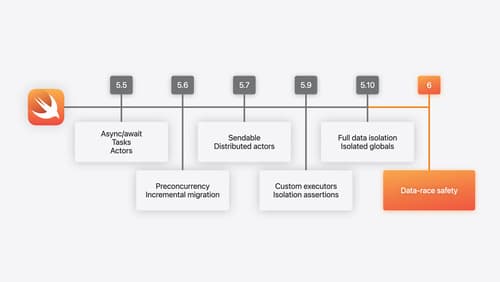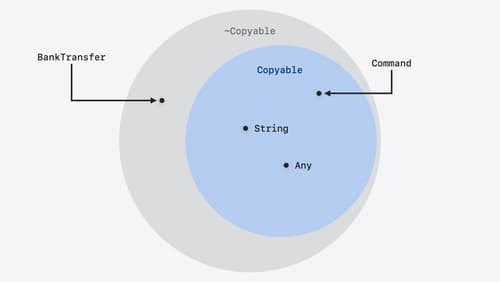C++ adjusts vtable pointers when calling ctors and dtors. Why doesn't Swift do vtable adjustment when calling deinit?
Asked on 2025-05-05
1 search
In Swift, the deinitialization process does not involve vtable adjustments like in C++ because Swift's memory management and object model are designed differently. Swift uses Automatic Reference Counting (ARC) to manage the lifecycle of objects, which simplifies the deinitialization process. The deinitializer (deinit) in Swift is called automatically when an object's reference count drops to zero, and there is no need for vtable adjustments because Swift does not use a vtable for method dispatch in the same way C++ does.
Swift's approach to memory management and function dispatch is more static and relies on compile-time information as much as possible, which can lead to more efficient code execution. This is discussed in the session Explore Swift performance at WWDC 2024, where the differences in function calls and memory management between Swift and other languages like C++ are explored.

What’s new in Swift
Join us for an update on Swift. We’ll briefly go through a history of Swift over the past decade, and show you how the community has grown through workgroups, expanded the package ecosystem, and increased platform support. We’ll introduce you to a new language mode that achieves data-race safety by default, and a language subset that lets you run Swift on highly constrained systems. We’ll also explore some language updates including noncopyable types, typed throws, and improved C++ interoperability.

A Swift Tour: Explore Swift’s features and design
Learn the essential features and design philosophy of the Swift programming language. We’ll explore how to model data, handle errors, use protocols, write concurrent code, and more while building up a Swift package that has a library, an HTTP server, and a command line client. Whether you’re just beginning your Swift journey or have been with us from the start, this talk will help you get the most out of the language.

Consume noncopyable types in Swift
Get started with noncopyable types in Swift. Discover what copying means in Swift, when you might want to use a noncopyable type, and how value ownership lets you state your intentions clearly.
